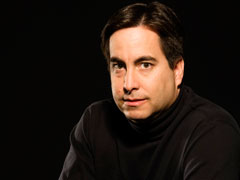Scientists Find Way to Coax Human Stem Cells Into Becoming T Cells
Canadian researchers have developed a way to direct unspecified human stem cells into becoming progenitor (or early) T cells, which then go to the thymus and give rise to mature T cells, an essential ingredient in immune system reconstitution.
This critical advance in regenerative medicine, published in the July 30 edition of Blood, makes possible new approaches to treating people with severe immune deficiencies, such as children born with little or no immune system, or people who have had chemotherapy.
Scientists at Sunnybrook Research Institute created the human progenitor T cells from stem cells in the lab using a method that they patented. They then implanted them into immune-deficient mice, wherein the unspecified cells travelled to the thymus and produced mature T cells.
"What's exciting about it is that the same progenitor cell we're making in vitro is a very rare cell in the actual organ (thymus); and, as we age, there are fewer of them and they're less effective," said lead researcher Dr. Juan Carlos Zúñiga-Pflücker, a senior scientist at Sunnybrook Research Institute. "So if we increase their numbers, we have a way to increase the flow of development of T cells in the organ. Generation of more T cells means a healthier immune system."
T cells are white blood cells that normally develop in the thymus after relocating there from bone marrow. They are essential to the body's ability to fight off disease, bacteria or infection; and are depleted or destroyed by diseases like AIDS, by bone-marrow transplants and by some anticancer treatments. In addition, some babies are born with a rare genetic disease in which they have little or no immune system.
Before the researchers placed the cells into the mice, they had to "instruct" them in the lab to adopt the features of cells that go to the thymus, that is, those that are capable of producing more T cells. "A pure stem cell," says Zúñiga-Pflücker, who is also a professor at the University of Toronto, and who holds the Canada Research Chair in Developmental Immunology, "doesn't have this ability; it will just go to the marrow or give rise to other things. It doesn't know that it wants to go to the thymus and become a T cell. So, we had to find a way to coax it do that."
To do this, the researchers undertook a labourious process to create the type of progenitor cell they wanted, and then used a novel technique to transplant surgically the cells into the mice. They then injected a growth factor with an antibody, and to this mix added the T cell progenitors. "It's kind of counterintuitive," says Zúñiga-Pflücker. "Usually an antibody blocks the function of something, but if you use the right antibody, you can actually hold the growth factor in place, stabilize it in the circulation so it's active for a longer period of time."
The result was enhanced T cell engraftment in mice, and the first proof that the antibody-growth-factor concept works with human cells in a preclinical model.
While still experimental, the findings have potentially huge clinical relevance. In addition to providing a new mechanism to treat immune diseases, they also suggest routes for the design of better cell-based therapies, which have shown promise in stopping advanced cancer in preclinical studies and are being evaluated in the clinic in humans.
The research was funded by the Canadian Institutes of Health Research, the Terry Fox Foundation, the Ontario HIV Treatment Network and the Krembil Foundation. Infrastructure support comes from the Canada Foundation for Innovation and the Ministry of Research and Innovation.



